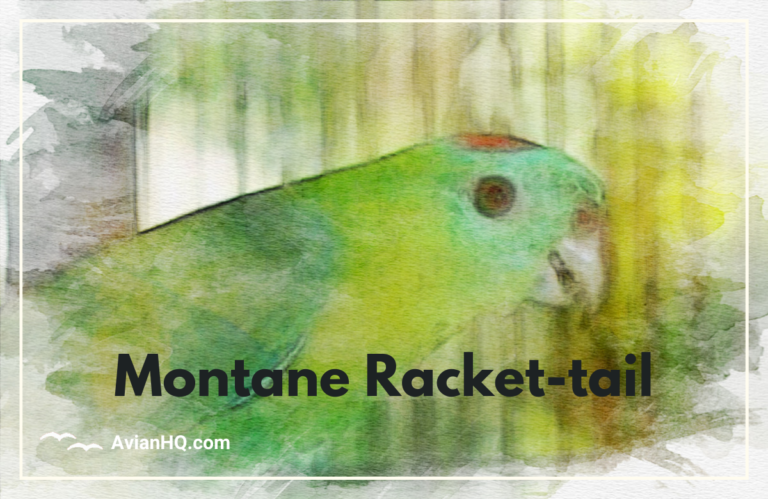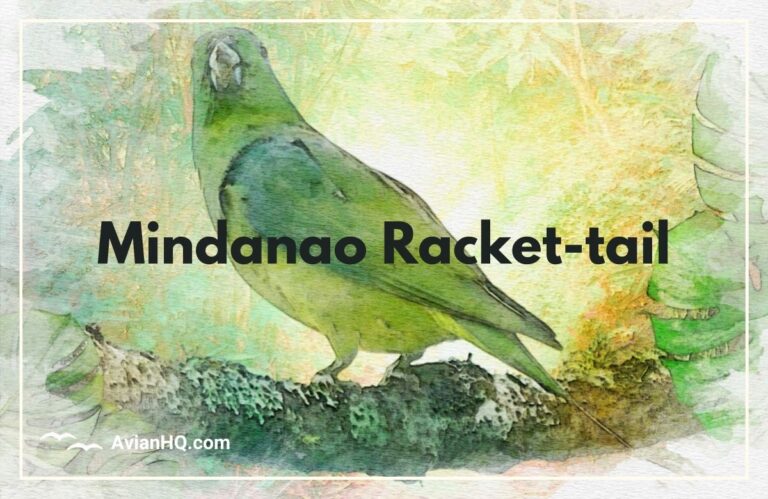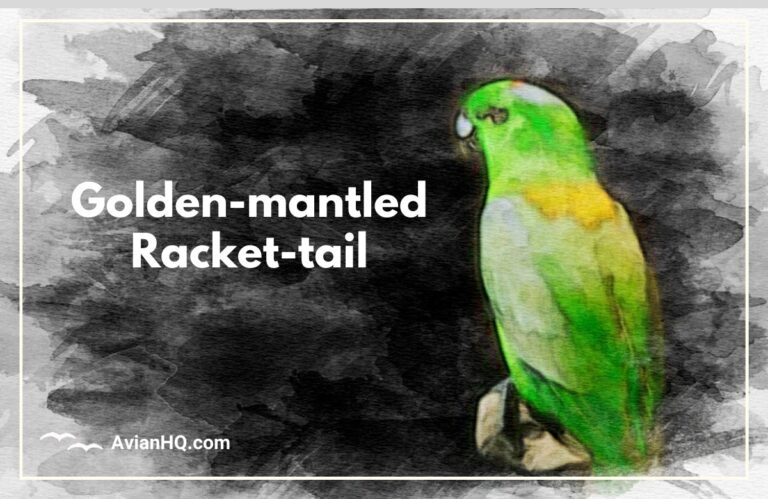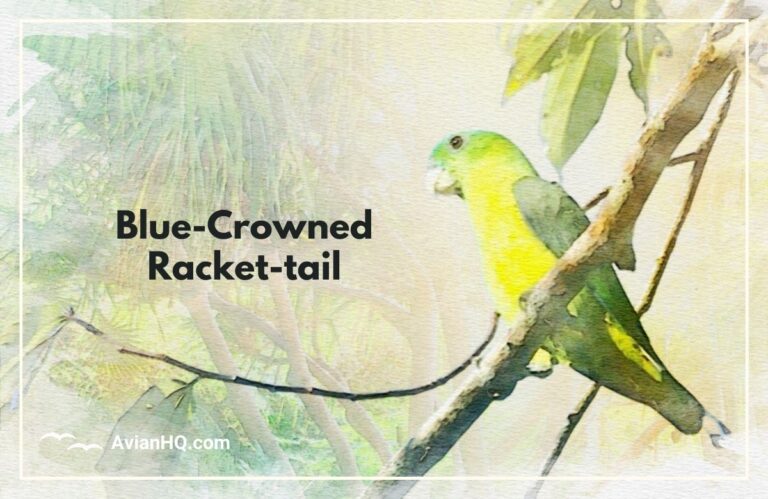Mindoro Racket-tail (Prioniturus mindorensis)
Endemic to the island of Mindoro in the Philippines, the Mindoro Racket-tail is a vividly-plumed parrot distinguished by it’s unique tail feathers. With a global population estimated at only 2,500-9,999 mature individuals, this vulnerable species faces an uncertain future due to habitat loss and trapping for the pet trade.
As you read on, you’ll learn more about this little-known parrot—from it’s taxonomy and physical description to it’s habits, habitat, and the conservation efforts underway to protect it. Through a mix of facts, natural history, and visual elements, this article aims to showcase the Mindoro Racket-tail’s distinctive beauty while underscoring why it merits our attention and stewardship.
Whether you’re a bird enthusiast, a conservationist, or simply interested in the natural wonders of the Philippines, insights into this rare Racket-tail will give you new appreciation for it’s role in it’s island ecosystem.
Taxonomy and Physical Description
The Mindoro Racket-tail belongs to the parrot family Psittaculidae and the genus Prioniturus. Once considered the same species as the similar Blue-Crowned Racket-tail (P. discurus), it is now classified as it’s own distinct species, P. mindorensis.
These parrots reach a relatively small size, measuring about 10.5 inches (27 cm) from head to tail. Their weight ranges around 5.3 ounces (150 grams).
The Mindoro Racket-tail sports vibrant plumage in shades of green, blue, black, and white. The forehead and most of the head and body are bright green. The crown is powder blue, sharply contrasted against the green. The wings are a darker green on the surface while the undersides of the flight feathers are bluish-green. The tail feathers are mostly green, with the outermost pairs tipped in blue and black. The underside of the tail is strongly suffused with blue.
The most distinctive feature of this species is the male’s elongated middle tail feathers that end in flattened, racquet-shaped tips. The female’s “rackets” are much shorter than the male’s.
Juveniles have less blue on the crown and lack the ornate tail feathers. Their overall color is duller as well.
Habitat and Distribution
The Mindoro Racket-tail is endemic to the island of Mindoro in the northern Philippines. It’s extent of occurrence across this island is estimated at around 4,700 square miles (12,100 km2).
These birds mainly inhabit lowland humid forests up to elevations of about 5,500 feet (1,670 m). They have been observed in both primary forest as well as cultivated areas near forest edges.
On Mindoro, populations are now fragmented across various forest patches on the island. The largest numbers are found in the remaining tracts of intact forest in the north and east. Recent sightings have been documented in the Siburan Important Bird and Biodiversity Area.
“The Mindoro Racket-tail’s limited range and specialized habitat make it vulnerable to forest loss across it’s island home.”
Though endemic to Mindoro, this species was possibly once found on other nearby islands such as Marinduque and Lubang. Deforestation likely caused their disappearance from any additional locations where they once existed.
Diet and Feeding Behavior
The Mindoro Racket-tail is predominantly frugivorous, feeding on various fruits, berries, nuts, and seeds.
They use their curved beaks adeptly to extract seeds and nuts from fruit husks and shells. Their strong jaws allow them to crack open hard nuts.
This parrot forages for food in the forest canopy, often in small flocks. They have also been observed visiting cultivated areas adjacent to forests to feed.
Fruits of fig trees, including strangler figs, are likely an important dietary component. The Mindoro Racket-tail may play a role in seed dispersal across it’s habitat as the seeds in the fruits pass through it’s digestive system.
Little detailed scientific study has been conducted on the feeding ecology and behaviors of this species. More research is needed to better understand the role of the Mindoro Racket-tail in it’s island ecosystem.
Breeding and Reproduction
There is limited information available about the breeding habits of the Mindoro Racket-tail. As with other parrots, they are believed to be monogamous and mate for life.
The breeding season is not well documented but likely aligns with onset of the rainy season and peak fruiting periods.
These parrots nest in tree cavities, either naturally occurring holes or old woodpecker nests. The female lays a clutch of 2-4 white eggs which she incubates for about 26 days. The male assists with incubation duties and provides food for the female.
Once hatched, the chicks are altricial, having very little downy feathers and needing full parental care. Both parents feed the nestlings with regurgitated fruit and seeds. The chicks fledge at 8-9 weeks old but continue to be fed by the parents for some time after leaving the nest.
Juveniles lack the long tail feathers and vibrant coloration of adults. They attain their mature plumage after 1-2 years.
More study of wild nests is needed to fully understand the breeding ecology of the Mindoro Racket-tail.
Vocalizations
The Mindoro Racket-tail is a noisy and vocal species, especially around dawn and dusk.
Their calls are high-pitched screeches, squeals, and grating sounds, typical of parrots. Though harsh to human ears, these vocalizations help the birds stay in contact with flock members as they forage in the forest canopy.
Pairs use softer contact calls to communicate with each other and coordinate activities. Flocks may chorus loudly at their evening roost sites.
When threatened or alarmed, these parrots give out a raucous, screeching alarm call to warn others.
Though their calls are similar to the Blue-crowned Racket-tail, there are likely distinctive differences between the two species. More study is needed on the nuances of the Mindoro Racket-tail’s vocal repertoire across various contexts.
Population Status and Threats
The wild population of the Mindoro Racket-tail is estimated at only 2,500-9,999 mature individuals. The species is classified as Vulnerable on the IUCN Red List.
This population is believed to be in decline due to ongoing threats such as:
- Habitat loss from deforestation. Forests on Mindoro have been heavily logged, cleared for agriculture, or degraded. From an original forest cover of about 4,350 square miles (11,300 km2), only around 470 square miles (1,200 km2) of suitable habitat remains.
- Trapping for the pet trade. Racket-tails are prized as pets and cagebirds, often trapped illegally despite their protected status. Even limited trapping poses a risk given the small population size.
- Mining and infrastructure projects that disturb or fragment forests.
- Hunting for food by some local communities.
Unless these threats can be effectively reduced, experts predict the Mindoro Racket-tail will continue to decline over the coming decades. More robust population monitoring and anti-poaching efforts are urgently needed.
Conservation Efforts and Recommendations
Some actions are underway to protect the remaining population of Mindoro Racket-tails:
- Parts of their habitat are located within protected areas such as Mounts Iglit-Baco National Park. However, enforcement in these parks is often inadequate.
- The species is listed under CITES Appendix II, limiting international trade. But domestic trade within the Philippines still occurs.
- Awareness campaigns by conservation groups aim to reduce poaching pressure. But much more engagement with local communities is required.
Further conservation actions recommended for this species include:
- Improved protection and management of existing protected areas on Mindoro. Patrols against illegal logging and poaching should be increased.
- Expansion of protected habitat through new reserves, corridors between fragments, and restoration projects.
- Stricter enforcement of anti-poaching and wildlife trade laws, with greater penalties for violators. Engage local communities in enforcement efforts.
- Population surveys every 5 years to closely monitor trends. Targeted studies on breeding biology and habitat use.
- Partner with indigenous groups, schools, governments, NGOs, and others to expand environmental awareness. Promote eco-tourism over extractive uses of Mindoro’s forests.
- Identify and monitor trade in Racket-tails, especially domestic trade within the Philippines. Pressure the government to crack down on illicit trade.
The Mindoro Racket-tail’s limited numbers and specialized habitat make it vulnerable to extinction without timely interventions. But by taking action now, conservationists can preserve these unique parrots into the future.
Conclusion
The Mindoro Racket-tail is a vivid tropical parrot confined to a single small island in the Philippines. Though once likely more widespread, clearing of Mindoro’s lowland forests has relegated it to fragmented remnants of suitable habitat.
With an estimated global population of only 2,500-9,999 adults, this specialized bird merits increased conservation attention. Trapping for the cagebird trade and ongoing deforestation pose grave threats to it’s survival.
Protecting it’s habitat through new reserves and corridors is crucial. Reducing poaching pressure via enforcement and community engagement can also give these parrots a better chance. There are opportunities to partner with local stakeholders to monitor populations, study ecology, and raise awareness about this Mindoro endemic.
By highlighting the uniqueness of the Mindoro Racket-tail and the challenges it faces, one hopes more resources can be mobilized to scientifically study and sustainably manage this species. Though small in stature, it’s persistence would signify important progress in preserving Philippine biodiversity.







